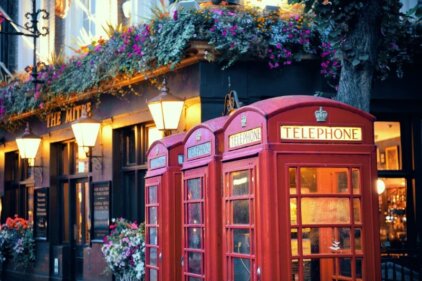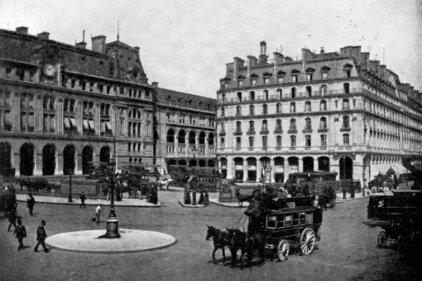As we stand in the heart of London, gazing up at the magnificent clock tower, we are reminded of the enduring legacy of Big Ben. This iconic landmark has stood tall for over a century, captivating the hearts and minds of people from all around the world. In this article, we will delve into the fascinating history of Big Ben, exploring its origins, construction, and the role it has played in shaping British culture.
Origins and Construction of Big Ben
The story of Big Ben begins in the mid-19th century when the Palace of Westminster, the home of the British Parliament, was ravaged by a fire in 1834. As plans were made to rebuild the palace, the need for a clock tower became apparent. The task of designing this monumental structure was given to the talented architect Charles Barry, while the clock mechanism was entrusted to the renowned clockmaker, Benjamin Vulliamy.
Construction of the clock tower began in 1843 and took a staggering 13 years to complete. The tower stands at an impressive height of 96 meters and is adorned with Gothic architectural elements, adding to its grandeur. The iconic clock face, with its golden numerals and intricate design, was designed by Augustus Pugin, a leading figure in the Gothic Revival movement.
The Iconic Clock Tower
The clock tower, synonymous with Big Ben, is a true marvel of engineering and design. Its four clock faces, each measuring 7 meters in diameter, are made up of 312 individual pieces of opal glass. The hands of the clock, made from a lightweight but durable copper alloy, are 4.2 and 4.3 meters in length for the minute and hour hands respectively.
What makes the clock tower truly remarkable is its accuracy? The pendulum, which swings with a precise rhythm, is regulated by a stack of old British pennies placed on its shaft. Each penny adds or subtracts half a second per day, ensuring the clock remains accurate to within a few seconds.
The Great Bell and Its Fascinating History
Contrary to popular belief, the name “Big Ben” actually refers to the Great Bell housed within the clock tower, rather than the tower itself. The bell weighs a staggering 13.5 tons and was cast in 1858 at the Whitechapel Bell Foundry. It took 20 men to hoist the bell up into the belfry, a feat that was accomplished with great precision and skill.
The naming of the bell has a touch of mystery to it. It is widely believed that it was named after Sir Benjamin Hall, the Commissioner of Works at the time of its installation. However, there are also theories that suggest the bell may have been named after Benjamin Caunt, a famous heavyweight boxer of the era.
Big Ben’s Role During World War II
During the dark days of World War II, Big Ben played a crucial role in the lives of Londoners. Despite the devastation caused by the Blitz, the clock tower remained standing as a symbol of resilience and hope. The chimes of Big Ben, which were broadcast on the radio, served as a comforting reminder to the citizens of London that they were not alone in their struggle.
Remarkably, even amid the chaos of war, the clock tower continued to keep time accurately. It is said that the clock’s reliability was so trusted that it was used as a reference for timing air raids and blackout regulations. Big Ben became a beacon of strength during a time of great adversity.
Renovations and Maintenance of Big Ben
Like any historic structure, Big Ben requires regular maintenance and occasional renovations. Over the years, the clock tower has undergone several renovations to ensure its preservation for future generations. The most extensive renovation took place from 2017 to 2021, during which the clock tower was shrouded in scaffolding.
The restoration project involved the cleaning and repair of the clock faces, refurbishment of the mechanism, and the installation of modern equipment to improve the clock’s accuracy. The renovation also included the addition of a new visitor center, allowing tourists to get a closer look at the rich history of Big Ben.
Big Ben as a Symbol of British Culture
Big Ben has become an enduring symbol of British culture, representing the nation’s rich history and traditions. The clock tower is often featured in movies, television shows, and photographs, serving as a visual shorthand for all things British. Its iconic silhouette has become synonymous with London and is instantly recognizable to people around the world.
The chimes of Big Ben, which have echoed across the city for over a century, are deeply ingrained in the cultural fabric of Britain. The clock tower’s hourly chimes have been broadcast on the BBC since 1923 and are heard by millions of people every day. The striking sound of Big Ben has become a comforting and familiar tune, a reminder of the passage of time and the endurance of tradition.
Famous Events and Celebrations at Big Ben
Throughout its illustrious history, Big Ben has witnessed and played a central role in numerous famous events and celebrations. From the annual New Year’s Eve fireworks display to the somber tolling of the bell on Remembrance Day, the clock tower has become a focal point for national celebrations and commemorations.
Perhaps one of the most famous events at Big Ben was the ringing of the bell to mark the opening of the first-ever Olympic Games held in London in 1908. The bell’s resonant tone echoed through the city, signaling the start of an event that would go on to captivate the world.
Big Ben’s Influence on Popular Culture
Big Ben’s influence extends far beyond its physical presence. The clock tower has become a beloved subject in literature, music, and art. Countless books and poems have been written about its grandeur, and musicians have composed melodies inspired by its chimes.
In the realm of cinema, Big Ben has made appearances in numerous films, often serving as a backdrop for dramatic scenes or as a symbol of London. It has become a popular tourist attraction, drawing visitors from all corners of the globe who are eager to catch a glimpse of this iconic landmark.
Conclusion: The Enduring Legacy of Big Ben
As the sun sets over London, casting a golden hue on the majestic clock tower, we are reminded of the timeless legacy of Big Ben. From its origins and construction to its role in World War II, Big Ben has stood as a symbol of strength, resilience, and British culture.
Through renovations and maintenance, Big Ben has been lovingly preserved, ensuring that future generations will have the opportunity to marvel at its beauty. Its influence on popular culture and its significance in historical events only add to its enduring appeal.
As we bid farewell to this iconic landmark, we carry with me a deep appreciation for the fascinating history of Big Ben. It is a testament to the power of human ingenuity and serves as a reminder that even the passage of time cannot diminish the timeless allure of this remarkable structure.
CTA: Plan your visit to London and witness the grandeur of Big Ben for yourself. Experience the history, culture, and beauty that this iconic landmark has to offer.





